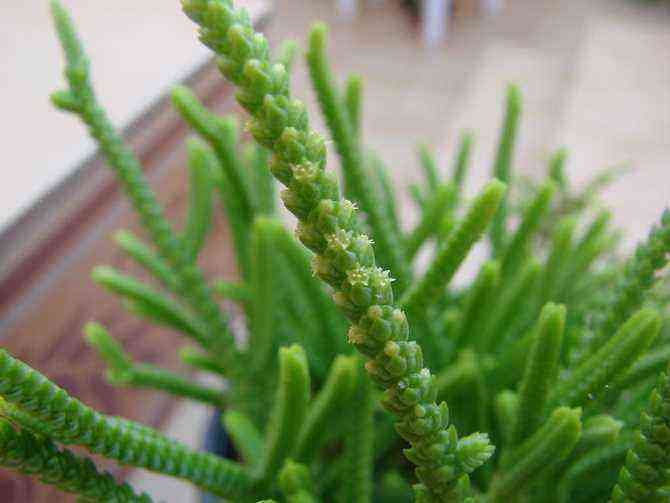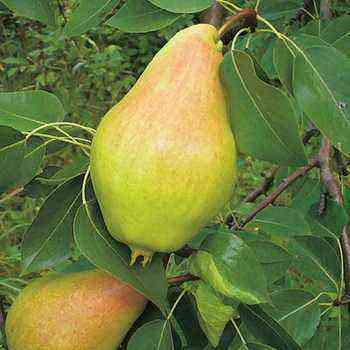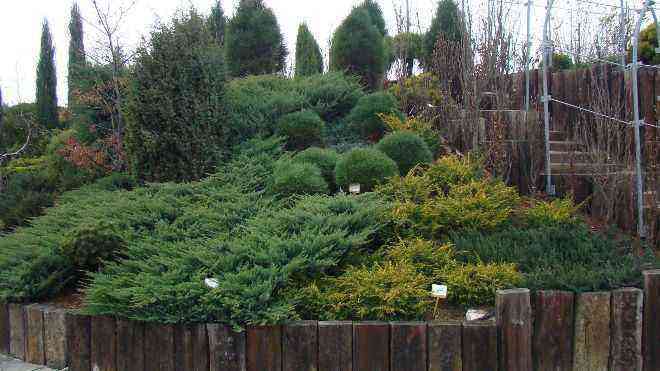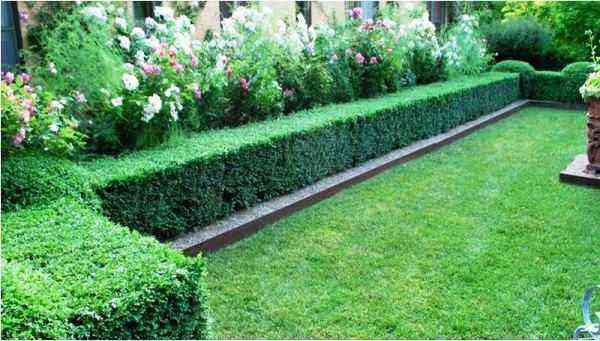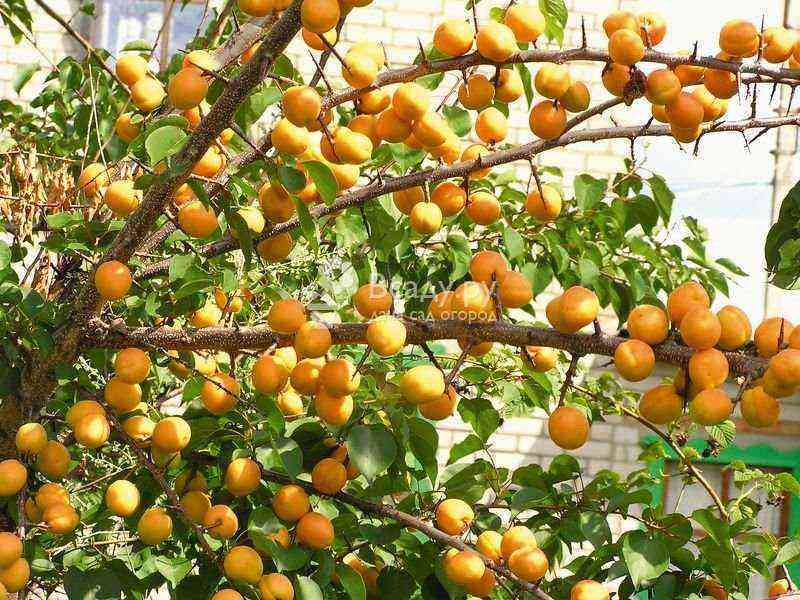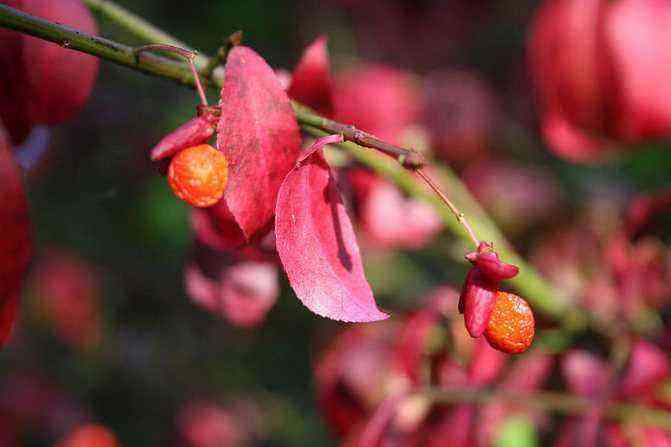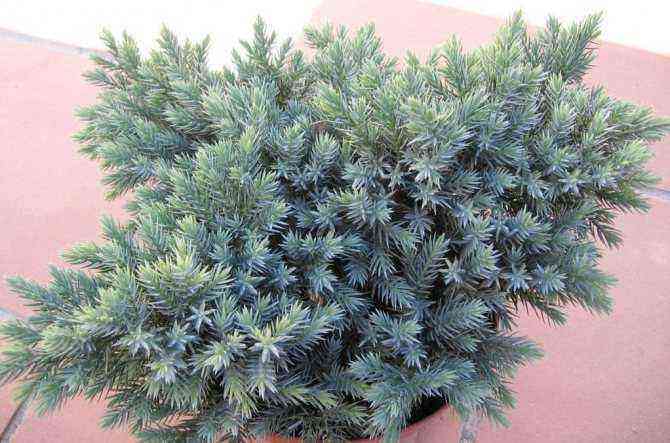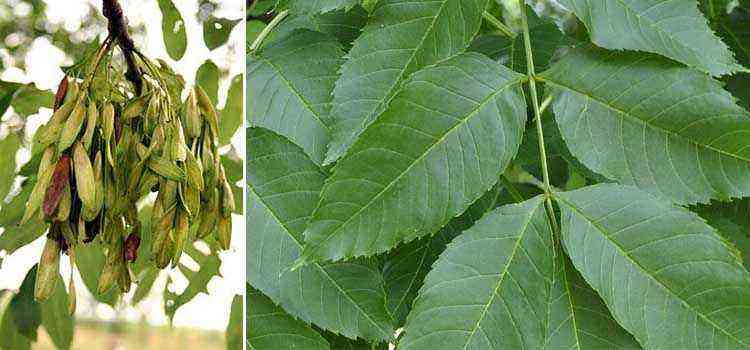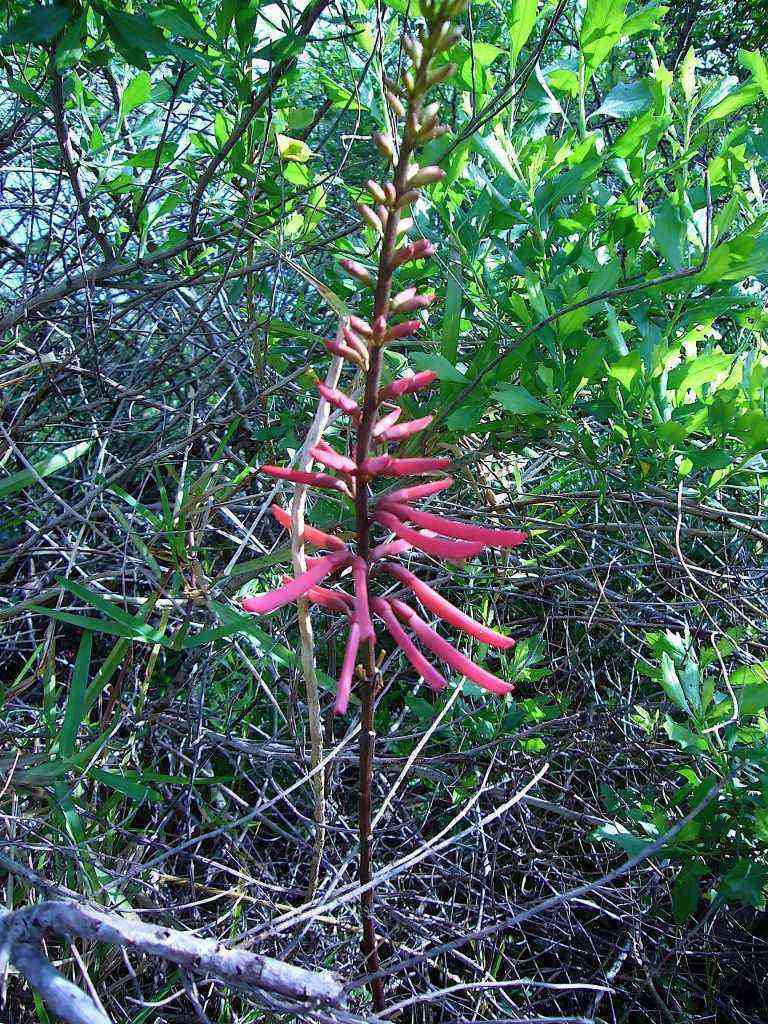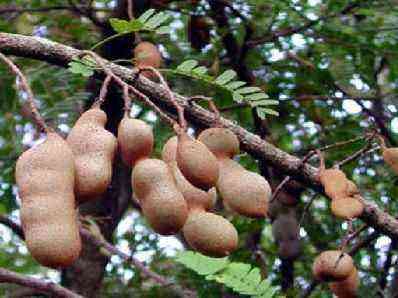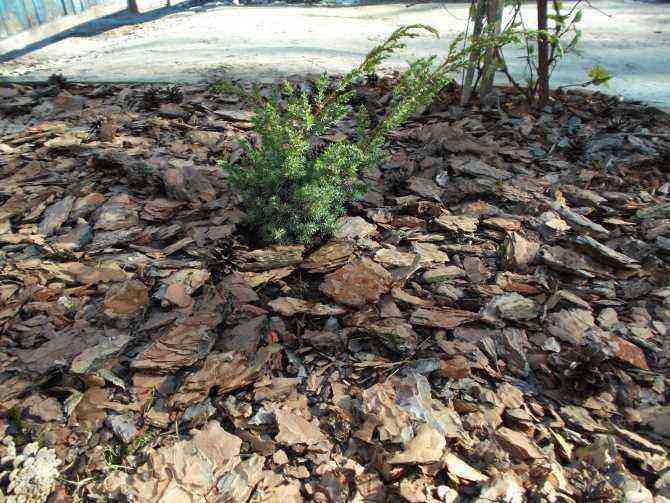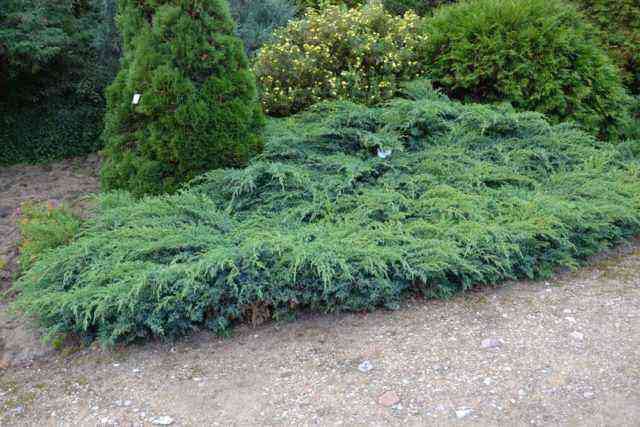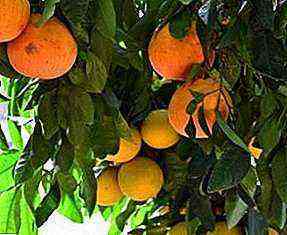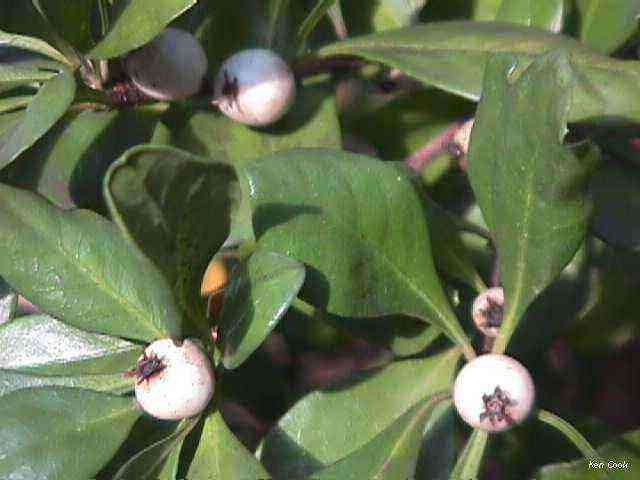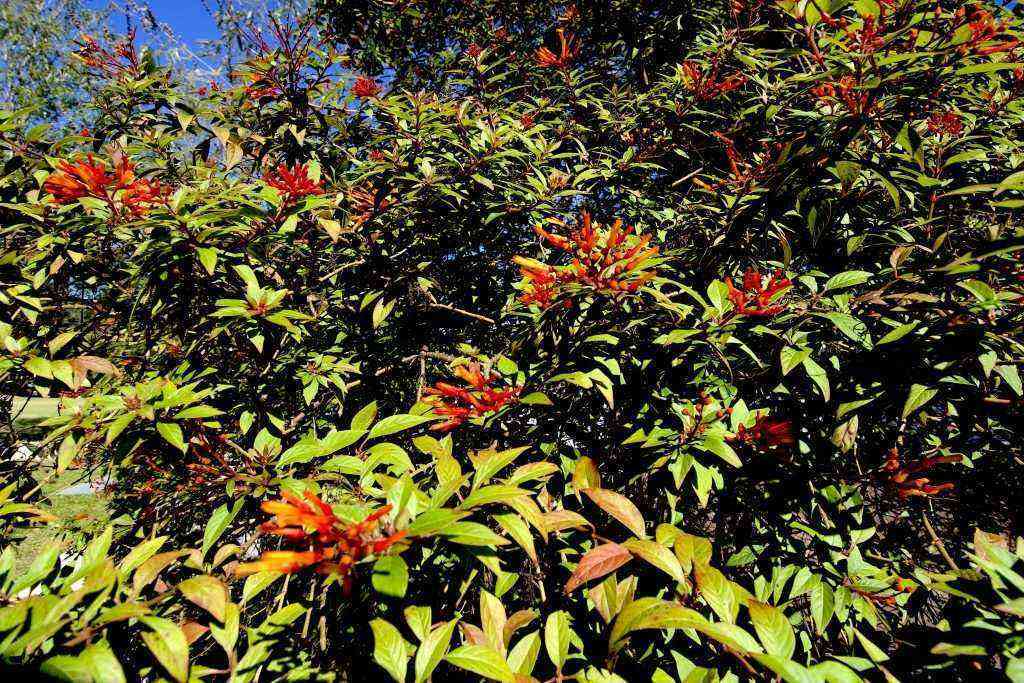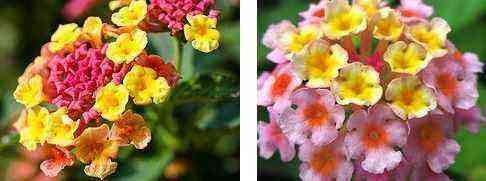Determining and timely adjusting the soil pH level is an important skill of a real professional summer resident. We will tell you how to understand the acid-base balance of the soil and change it for the benefit of the garden and vegetable garden.
We all know perfectly well that pH is the pH value, in which the acidity of a particular environment is expressed. Which crops will grow well, bloom and bear fruit on your site, and which will not, largely depend on the acidity of the soil, therefore it is important to know and take note of this indicator for any grower – both an amateur and a professional.
Of course, going against nature is difficult, but nevertheless, it is possible and even necessary to make some adjustments to the pH level.
The pH scale – what is it and how do you understand it?
The acid-base balance scale ranges from 0 to 14. The neutral pH is considered to be pH 7. Low pH indicates that the environment is acidic, and tall – that it is alkaline. Accordingly, pH 0 will be the most acidic and pH 14 the most alkaline.
In the case of determining the acidity of the soil, perfect commonly referred to as pH 6,0-6,5. However, neutral soils with a pH value between 5,5 and 7,5 are considered. Acidic soils have a pH of 4,6-5,0, strongly sour – pH 4,5. Alkaline soils have a pH of 7,5-7,9, strongly alkaline – pH 8 or more.
A pH difference of 0,5-1 may seem insignificant, but it is actually significant. For example, the acidity of a medium with a pH of 7 is 10 times less than a medium with a pH of 6!
How to lower soil acidity
It is known that mainly sod – podzolic and peat soils have an acidic environment.
The best way to reduce the acidity of the soil is to apply lime fertilizers. To do this, you can use dolomite flour, slaked lime, quicklime, ground chalk, limestone, cement dust, wood ash. Liming will be carried out correctly in the fall for plowing. Moreover, the finer the grinding, the better the contact with the soil and the faster it deoxidizes.
Such a measure reaches the full effect only in the second – third year after application. On average, it is necessary to apply up to 1-2 kg per m2, taking into account the initial pH.
Wood ash will help to partially deoxidize the soil, in addition, it will also enrich it with microelements; manure (1-3 buckets / m2) – helps to increase soil fertility and aeration, thereby reducing acidity.
How to determine the pH of the soil on the site?
We discussed this issue in detail in another material farmer-online.com, so we will not dwell on it in detail:
Let’s just say that there can be several ways to determine the acid-base balance of the soil. The pH indicator can be found both by the classical method – using a litmus test, which can be purchased at the pharmacy, and by less traditional methods (for example, using vinegar).
In addition, perennial grasses and weeds that grow on your site will tell you about the acidity of the soil. Take a closer look and check our cheat sheet:
How to check the acidity of the fertile layer of the earth?
Accurate pH data are obtained from agrochemical laboratories. However, not every gardener can send soil samples for analysis. There are several simpler methods that give a satisfactory result:
- Litmus paper. A soil sample is poured with a 3-fold amount of distilled water, mixed thoroughly, insisted for half an hour. Then the indicator sheet is immersed in the solution and its color is compared with the standard scale.
- The device is a pH meter. To measure acidity, a hole is dug about 10 cm deep, filled with water, stirred until an earthen slurry is formed. The probe of the device is buried in it with rotational movements, left for a couple of minutes, and then the result is checked.
- Take 4-5 black currant leaves, pour 200 ml of hot water over them, cool. Then they lay down the earth. The liquid has acquired a blue tint – the reaction is neutral, green – slightly acidic, red – acidic.
- A little 9% vinegar is poured into a glass of clean water, 1 tsp is put. earth, stir. The solution foams strongly – the reaction is alkaline, there is little foam – neutral, nothing happens – acidic.
To obtain a reliable result, the following rules are followed when collecting soil samples:
- use different parts of the garden, because the pH changes with the cultivation of certain crops and fertilization;
- earth is extracted from a depth of 20-30 cm: on the surface, the reaction is always close to neutral.
The presence of some plants on the site signals the pH value:
- chamomile, fescue, wheatgrass, clover, field bindweed grow on slightly acidic soil;
- coltsfoot, toadflax, wild poppy, field mustard – on alkaline.
Acidity is easy to check on beets. Red leaves – acidic reaction, reddish veins on leaf plates – slightly acidic, green tops and large roots – neutral.
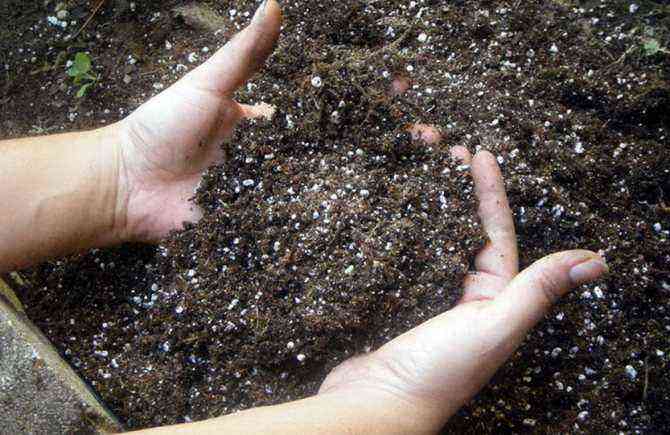
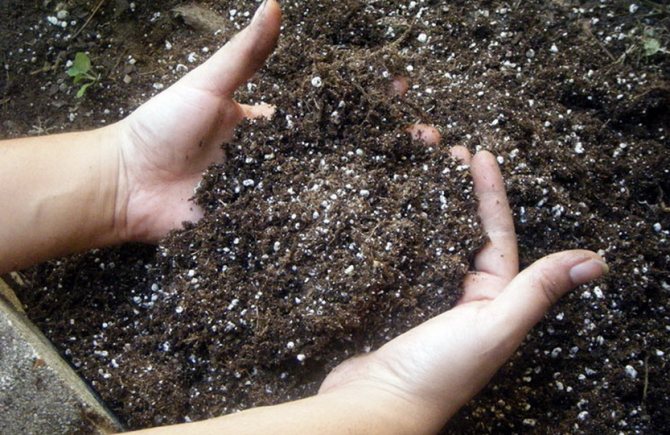
What does soil pH depend on?
Of course, the determining factor that affects the acid-base balance of the soil is natural conditions.
It is no secret that the soil in the marshy area, on the moorlands, is acidic. But alkaline soils are found in places with a high content of limestone and other calcium-rich rocks.
Nevertheless, it should be borne in mind that the acid-base balance of the soil is a variable value. It can change under the influence of factors such as:
- fertilizers that are applied to the soil,
- watering mode,
- weather.
Therefore, it would be nice to periodically (preferably once a year) measure the pH again and make adjustments to the planting plan.
Many mineral fertilizers, especially those with a high sulfur and ammonium content, acidify the soil… The same can be said for composted pine needles and moss. It also acidifies the soil in the process of overheating and organic matter.
How to acidify the soil
Before planting plants that require acidic soil, it is important to carry out a series of acidification activities.
You can add organic materials when planting:
- rotted sawdust;
- pine needles;
- moss-sphagnum;
- high peat;
- leaf compost;
- fresh manure.
Mineral compounds also affect acidity:
- ammonium nitrate;
- ferrous sulfate;
- colloidal sulfur.
For a quick change in acidity, acid solutions are used:
- sulfuric acid;
- lemon acid;
- vinegar.
If plants that prefer acidic soil are planted on the site, then it is necessary to periodically acidify it with the indicated acid solutions. This is the basis for caring for plants that love acidic soils.
Why is the disturbed acid-base balance of the soil dangerous?
It is not for nothing that the neutral pH of the soil is considered the most favorable for crop production, because both increased alkalinity and off-scale acidity give certain (and not always pleasant!) Consequences.
So, alkaline soils (pH above 7,5) hinder the absorption of iron by plants. As a result, they develop poorly, their leaves begin to turn yellow.
On the acidic soils (pH below 5,0) Plants are faced not only with the problem of poor digestibility of many nutrients, but also with another problem: many bacteria beneficial to plants also cease to function.
So, what exactly happens to the soil when the acid-base balance changes?
| pH 3,0-5,0 | pH 5,1-6,0 | pH 6,1-7,0 | pH 7,1-8,0 |
| Very acidic soil | Acidic soil | Neutral soil | Alkaline soil |
| Most nutrients (especially calcium, potassium, zinc, magnesium) dissolves easily under the influence of acid and quickly washed out of the soil. Most phosphates ceases to be absorbed by plantsSome plants that love acidic soils are still able to absorb aluminum phosphate. Bacteria cannot decompose organic matter at a pH below 4,7, the plants receive less nutrients accordingly. | Ideal environment for acid-loving plants: rhododendrons, blueberries, hydrangeas, conifers, heathers, etc. Most vegetable and horticultural crops obtain all the essential nutrients from the slightly acidic soil. | Optimal conditions for the activity of beneficial bacteria and worms. main nutrients available to plants. | Reduced availability of phosphorus for plants. Iron and magnesium are less absorbed by plants from the soil, which leads to the development of chlorosis. |
Ornamental plants that love acidic soil
Today it has become very fashionable to grow on your land plot not just ordinary flowers or any other plants, but also to plant decorative ones. Very unusual and ornamental plants include:
- rhododendron or azalea;
- heather;
- caustic buttercup (is poisonous);
- moss;
- marsh viola;
- hydrangea;
- viburnum;
- May lily of the valley;
- fortegilla Gardena;
- lupine is multi-leaved.
They not only love acidic soil, but also have a very unusual appearance. So such flowers will be able to decorate absolutely any land plot and make it completely unusual.
How to balance soil pH?
The most common problem is overly acidic soils. Alkaline soils are not common.
You can neutralize acidic soil with lime or wood ash, alkaline soil with sulfur (in season) or organic matter (in autumn).
How exactly and in what dosage to introduce certain neutralizers, read in our material:
Note that excessive liming can do more harm than good. As a result of thoughtless application of lime, phosphorus in the soil combines with aluminum and iron in a form that cannot be absorbed by plants. In addition, it is impossible to add the correct amount of lime without first measuring the acidity of the soil. Therefore, it is better to not get enough lime than to overdo it with it.
The best way to improve the acid-base balance in the soil is to add rotted compost or humus to it. Ready, properly prepared compost (except for composted needles and moss) has a neutral pH.
Most popular vegetable, horticultural and ornamental crops thrive in acidic soil with a pH of up to 7,5. Therefore, if your goal is a beautiful flower garden, a fruitful garden and a fruitful vegetable garden, first of all it is worth working on the quality of the compost that you add to the soil, and not on its perfectly adjusted acid-base balance.
The effect of soil acidity on plants. Ways to neutralize high soil acidity
19.10.2017/XNUMX/XNUMX For each crop, there is an optimal value of soil acidity, at which it develops in the best way, therefore “pH” (acid-base balance) is one of the most important indicators of the quality of soil fertility.
Soil acidity is a property due to a certain set of hydrogen ions. Acidity is usually expressed through the “pH” of the solution (liquid phase of the soil), where “pH” is the negative logarithm of the concentration of hydrogen ions, expressed in gram equivalents (per liter of soil suspension).
At a “pH” of seven, the reaction of the solution is neutral (the number of H + and OH ions is the same), if the value is below seven, then the soil is acidic, if above seven, then alkaline. Thus, the lower the “pH” value, the higher the acidity.
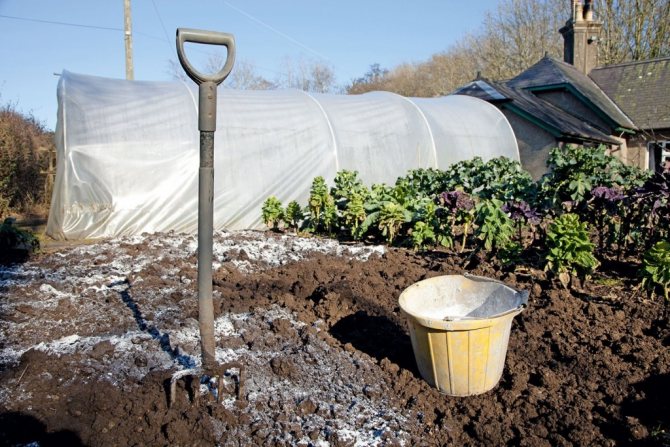
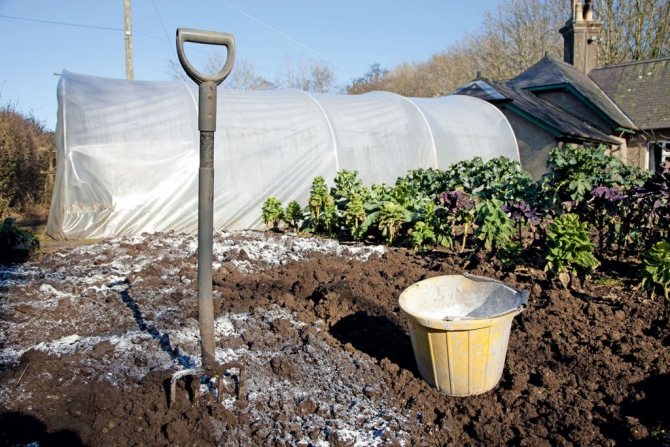
Effect of soil acidity on plants
As a rule, the increased acidity of the soil inhibits the growth and development of plants. This is due to the fact that in acidic soils the content of soluble aluminum and its salts, as well as manganese, which bind alkaline minerals: calcium, magnesium, potassium, selenium and others, predominates, preventing their normal assimilation by plants. In addition, in acidic soil, pathogenic bacteria, microorganisms and pests multiply faster and more actively, and fertilizers applied to the soil do not decompose. This leads to imbalances in the soil.
It should be remembered that every plant, whether garden, vegetable or indoor, prefers a certain acidity of the soil. Some crops are poorly suited – acidic soil, others grow better in neutral, still others prefer alkaline or weakly alkaline soil.
Plants are classified into the following categories based on preference:
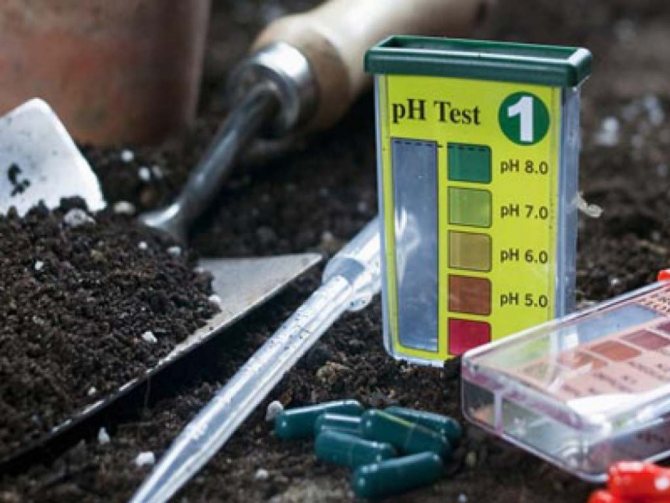
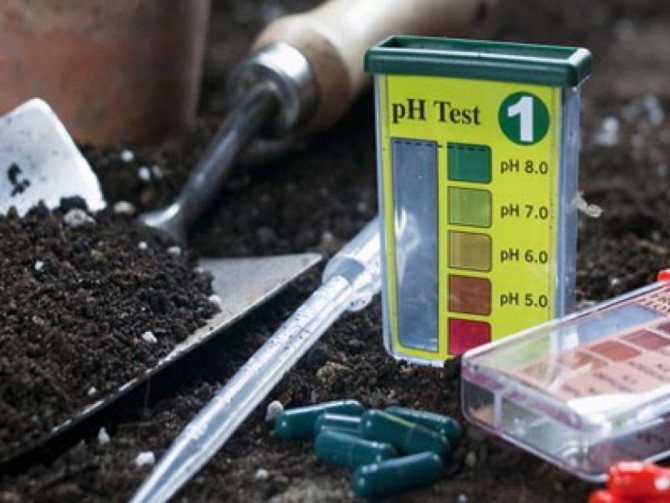
К acidophilus
include, as a rule, wild plants and herbs (horsetail, sorrel, moss, oxalis, blueberries, and so on).
К neutrophils
include common chicory, creeping clover, wheatgrass, sow thistle, shepherd’s bag, feather grass, cloves, bells.
К basifilam
it is customary to classify mother and stepmother, alfalfa, thyme, field bindweed, lady’s slipper, sowing chestnut, sedge, May lily of the valley, pine.
However, you should not absolutely rely on wild herbs when determining soil acidity, as plants can adapt and grow normally in a wide variety of soils. Therefore, for greater reliability, it is worth using a chemical method for determining the acidity of the soil.
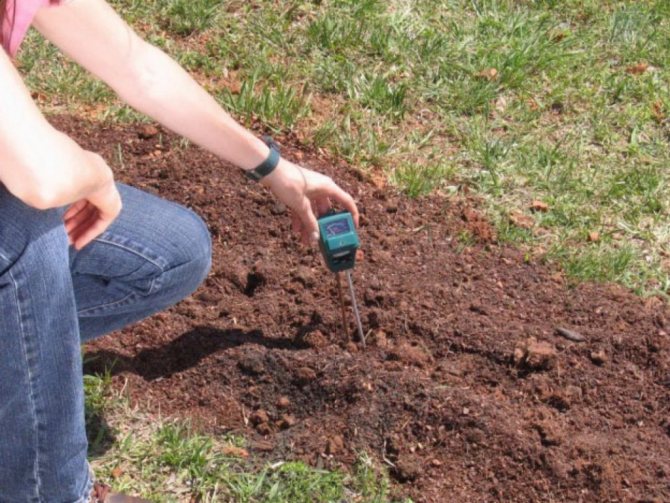
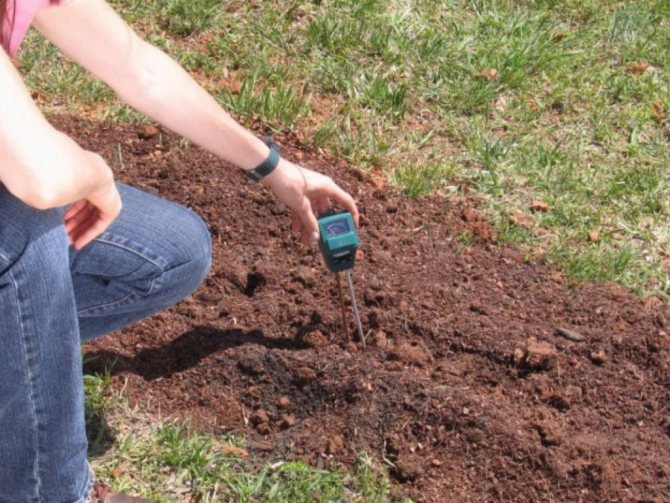
As for popular horticultural crops, as a rule, they do not tolerate very oxidized soils, although strawberries, raspberries, quince, apple trees, and honeysuckle feel great on weakly acidic soils.
From garden plants in weakly acidic soil, potatoes, zucchini, tomatoes, pumpkins grow well, although the majority of cultivated plants, of course, prefer soil with a neutral reaction or close to it.
Why is it important that the acidity of the soil matches the crop being grown?
The fact is that when the acidity of the soil does not correspond to the plants, the normal process of nutrition is disrupted and some useful substances and compounds are not absorbed or absorbed extremely poorly, as a result of which they grow slowly and get sick. In addition, a low “pH” value can lead to the fact that many trace elements such as copper, zinc and boron can even be toxic to plants.
How to check the acidity of the soil?
As a rule, the reaction of the soil solution on cultivated lands within the “pH” range is from four to nine (moreover, on sphagnum peatlands, the value can be equal to three units, and on solonetz soils it can even reach ten).
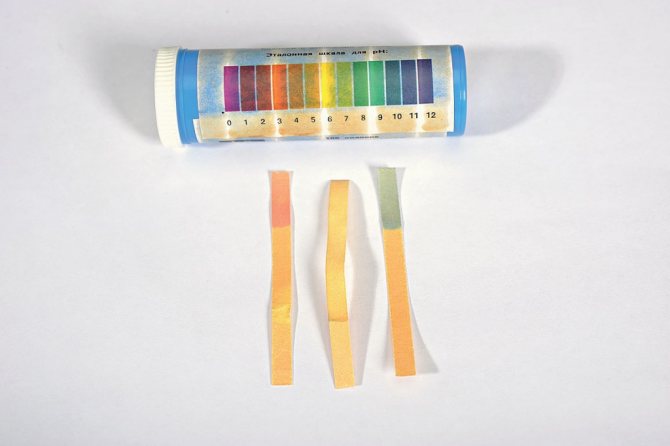
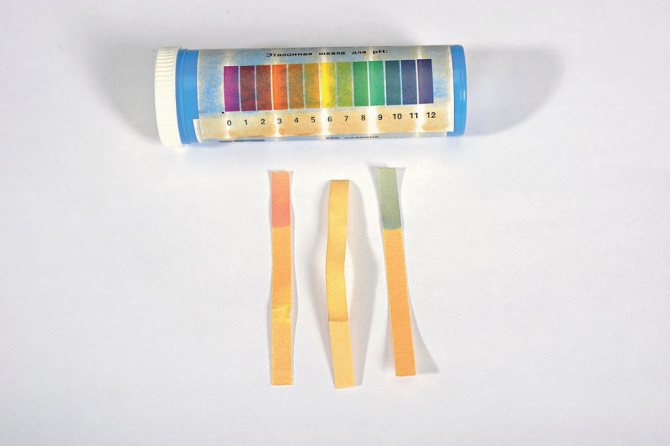
To determine the acidity of the soil at home, you can use litmus indicators and a previously prepared extract from the soil. The hood is prepared in the form of a suspension (one part to five). For the production of this experiment, there is no need to have a large volume of suspension, it is enough to prepare a small test tube, place about two grams of soil in it and then pour the contents with ten milliliters of water, after which the test tube should be shaken and wait until the sediment settles. Now you can dip litmus paper into the solution and see what shade it will acquire.
The resulting color must be compared with this table.
Ways to improve acidic soils
One of the main techniques for improving acidic soils is the liming process. The fact is that lime displaces hydrogen and aluminum from the upper fertile layer of the earth, replacing them with magnesium and calcium, thereby reducing the toxic effect on plants. At the same time, trace elements such as potassium, phosphorus and molybdenum are converted into more digestible forms.


A decrease in the acid reaction towards neutral contributes to the faster growth and development of soil microorganisms, which are involved in the transformation of nitrogen, phosphorus and other compounds, producing organic substances from them.
Soil liming is carried out by introducing lime or dolomite flour into the soil, which should be placed in the soil at a depth of about twenty centimeters.
Agricultural lime is calcium carbonate, magnesium carbonate, or a mixture of both. Today it is the most common acid neutralizer.
The principle of lime application is quite simple: the heavier the soil, the more lime you need to put in the ground, and this procedure should be repeated every five, six years (it should be remembered that the acidity of the soil will change significantly only after two or even three years).
When adding lime, one should not forget that liming leads to a loss of mobility of boron and manganese compounds, therefore, it is advisable to apply boric fertilizers simultaneously with the lime laying procedure.
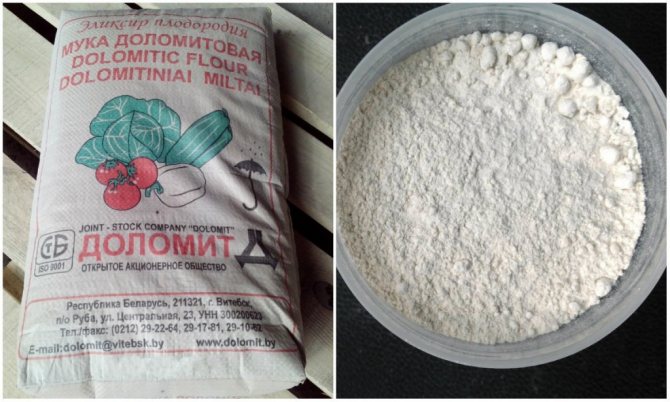
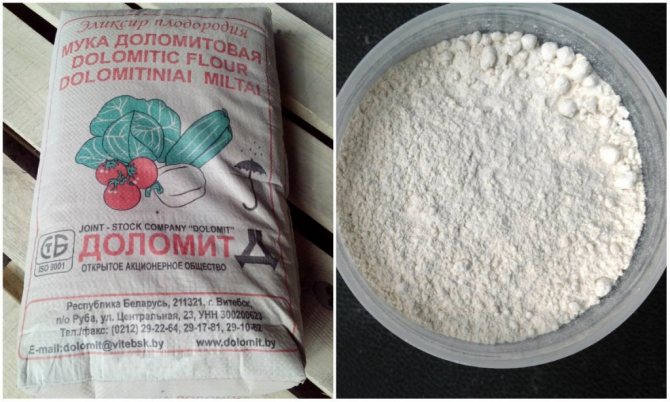
Lime application rates to reduce soil acidity


In addition to the above means to neutralize acidity, you can use: burnt lime (you must first extinguish it with water), drywall (lake lime, which is mined in dry water bodies), crushed chalk, peat or wood ash.
An excellent way to improve acidic soil is to grow green manure plants that raise the “pH” level. Such crops include lupine, legumes, seradella, clover, sweet clover, white mustard, rye, buckwheat, vetch, phacelia and others.
It is impossible to ignore such a by-product of sugar beet production as defect
or defecation mud (filter cake), which is used as fertilizer, while significantly improving acidic soils. Since plants on acidic soils experience calcium hunger, sugar beets compensate for this deficiency, saturating the earth and neutralizing increased acidity.
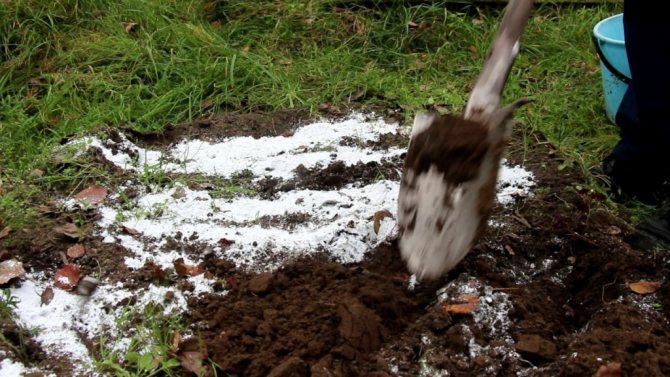
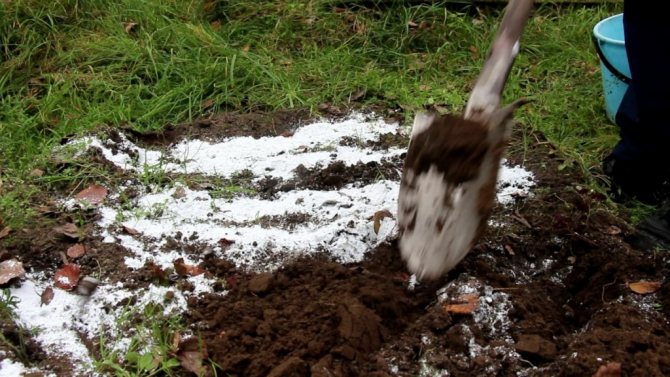
Intentional soil acidification
As a rule, deliberate soil acidification is quite rare, usually the opposite happens. But since such a need has arisen, the easiest way is to add sour swampy peat to the soil. This will lower the “pH” level.
In any case, the acidity of the soil should be monitored and controlled from time to time, because its fertility, and, accordingly, yield directly depends on this.
Soil pH Chart for Popular Horticultural, Spice and Vegetable Crops
| culture | Recommended pH level |
| Asparagus | 6,0-8,0 |
| Basil | 5,5-6,5 |
| beans | 6,0-7,5 |
| rutabaga | 5,5-7,5 |
| Peas | 6,0-7,5 |
| Pear | 6,0-7,5 |
| Blackberry | 5,0-6,0 |
| squash | 5,5-7,0 |
| Cabbage | 6,0-7,5 |
| Potatoes | 4,5-6,0 |
| Strawberries | 5,0-7,5 |
| gooseberries | 5,0-6,5 |
| Onions | 6,-7,0 |
| Skoroda onion (chives) | 6,0-7,0 |
| Leek | 6,0-8,0 |
| Shallot | 5,5-7,0 |
| Marjoram | 6,0-8,0 |
| Raspberry | 5,0-6,5 |
| Carrots | 5,5-7,0 |
| Cucumber | 5,5-7,0 |
| Parsnip | 5,5-7,5 |
| Parsley | 5,0-7,0 |
| Rhubarb | 5,5-7,0 |
| Radish | 6,0-7,0 |
| Rosemary | 5,0-6,0 |
| Salad | 6,0-7,0 |
| Beetroot | 6,0-7,5 |
| Plum | 6,0-7,5 |
| white currant | 6,0-8,0 |
| Red currants | 5,5-7,0 |
| Blackcurrant | 6,0-8,0 |
| Thyme | 5,5-7,0 |
| Tomato | 5,5-7,5 |
| Turneps | 5,5-7,0 |
| Pumpkin | 5,5-7,5 |
| beans | 6,0-7,5 |
| Garlic | 5,5-7,5 |
| Sage | 5,5-6,5 |
| Spinach | 6,0-7,5 |
| Apple tree | 5,0-6,5 |
We hope our article was useful to you, and you will not forget to determine the pH of the soil in your area before the start of the next planting season!
Low acidity – what to do?
If the acidity is too low, it is considered alkaline. The latter is harmful to seedlings – it stops developing, withers. Also, the leaves of fruit plants begin to turn yellow and fall off. This is characterized by a deficiency in the substrate of manganese, iron, zinc and copper, as well as phosphorus.
To increase acidity, perform the following activities:
- Peat is brought in.
- Dig up the soil together with manure or humus.
- The use of spruce branches in the form of mulch not only acidifies the soil, but also saturates it with useful substances.
- Urea has a beneficial effect – not only smoothly reduces the alkalinity index, but also is a mineral fertilizer.
It is not worth increasing the acidity in sudden jumps. This will not only adversely affect plants, but can also completely destroy trees and shrubs. Measures that increase the pH of the sphere should be carried out carefully and gradually.
We suggest that you familiarize yourself with How to grow sakura from seeds from China at home: how to plant, propagate, make bonsai
Plant-indicators

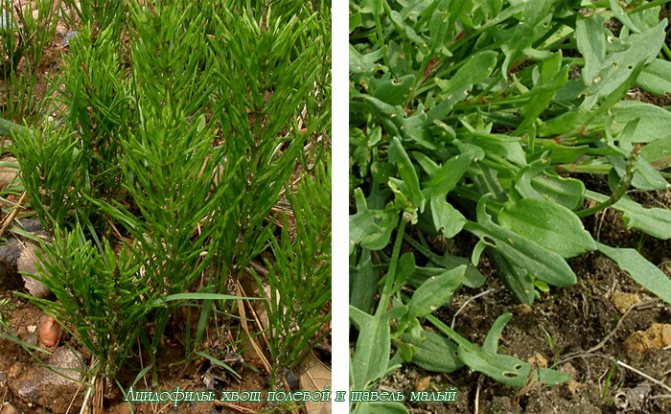
We know that all plants, both horticultural crops and indoor plants, have a different need for soil acidity. Some of them prefer slightly acidic soils, others grow well only on neutral or slightly alkaline. There is a corresponding terminology: acidophils – plants of acidic soils, neutrophils – plants of neutral soils, basiphils – plants of alkaline soils. Wild herbs can serve as a kind of indicator of acidity, so, where acidophiles grow (pH = 5,3-6,0): field horsetail, small sorrel, mosses, horsetails, caustic buttercup, blueberries, oxalis – the soil is probably acidic … Heathers, meadow cornflowers, forest ferns – on slightly acidic (pH = 6-6,7).
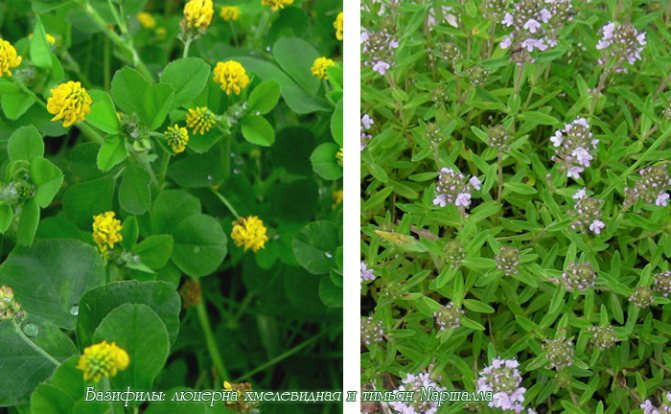

Neutrophils (pH = 6,0 – 7,2): cornflower, common chicory, creeping clover, thistle, wheatgrass, shepherd’s purse, alpine cuff, feather grass, bearded irises, carnations, bells, etc. Basiphils (pH = 7,3 – 8,1): coltsfoot, hop alfalfa, Marshall thyme, field bindweed, samoseyka poppy, rhizomatous sedge, lady’s slipper, rhizome sedge, etc.
But it is impossible to rely entirely on wild-growing herbs in determining acidity – studies show that the occurrence of different species on soils with one or another acidity is different. Many plants are indifferent to small fluctuations in soil acidity; in addition, there is an adaptability to edaphic factors (a combination of physical and chemical properties of soils). Therefore, the most reliable way to determine acidity is with the help of chemical reagents (litmus indicator).
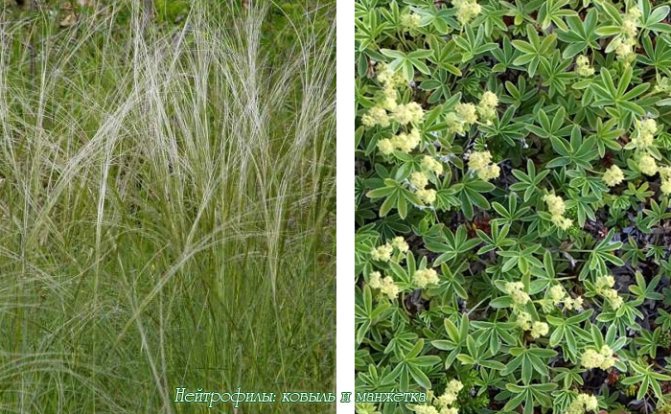

From garden crops, there are no special lovers of acidic soils, on weakly acidic soils, quince, apple, raspberry, blackberry, strawberry and edible honeysuckle, cranberry, irga (gonobel) grow well on weakly acidic soils, from garden crops: tomatoes and potatoes, radishes, sorrel, squash and pumpkins, worse carrots. From florals: anemone, dicentra, delphinium, primroses of various species, Siberian and Japanese irises and some lilies (for example, Asian hybrids), many varieties of roses, armeria, dryads, saldanella, hydrangeas, as well as most conifers, heather (erica), rhododendrons …
Most horticultural crops prefer a pH close to neutral. These are, first of all, cucumbers, cabbage, bell peppers, beets, garlic, onions, asparagus, spinach, turnips, radish, melon, watermelon, cherry plum. From fruit and berry: red, black, white currants, cherries, sweet cherries, pears, apricots, plums, grapes (almost all varieties bear fruit well exclusively on neutral soils), as well as apple trees (they are tolerant of acidity and grow well even on weak acidic and on neutral soils). Moreover, some vegetables, such as cabbage and beets, absolutely do not tolerate acidic soils, the optimum pH for them is in the range of 7-7,5.



